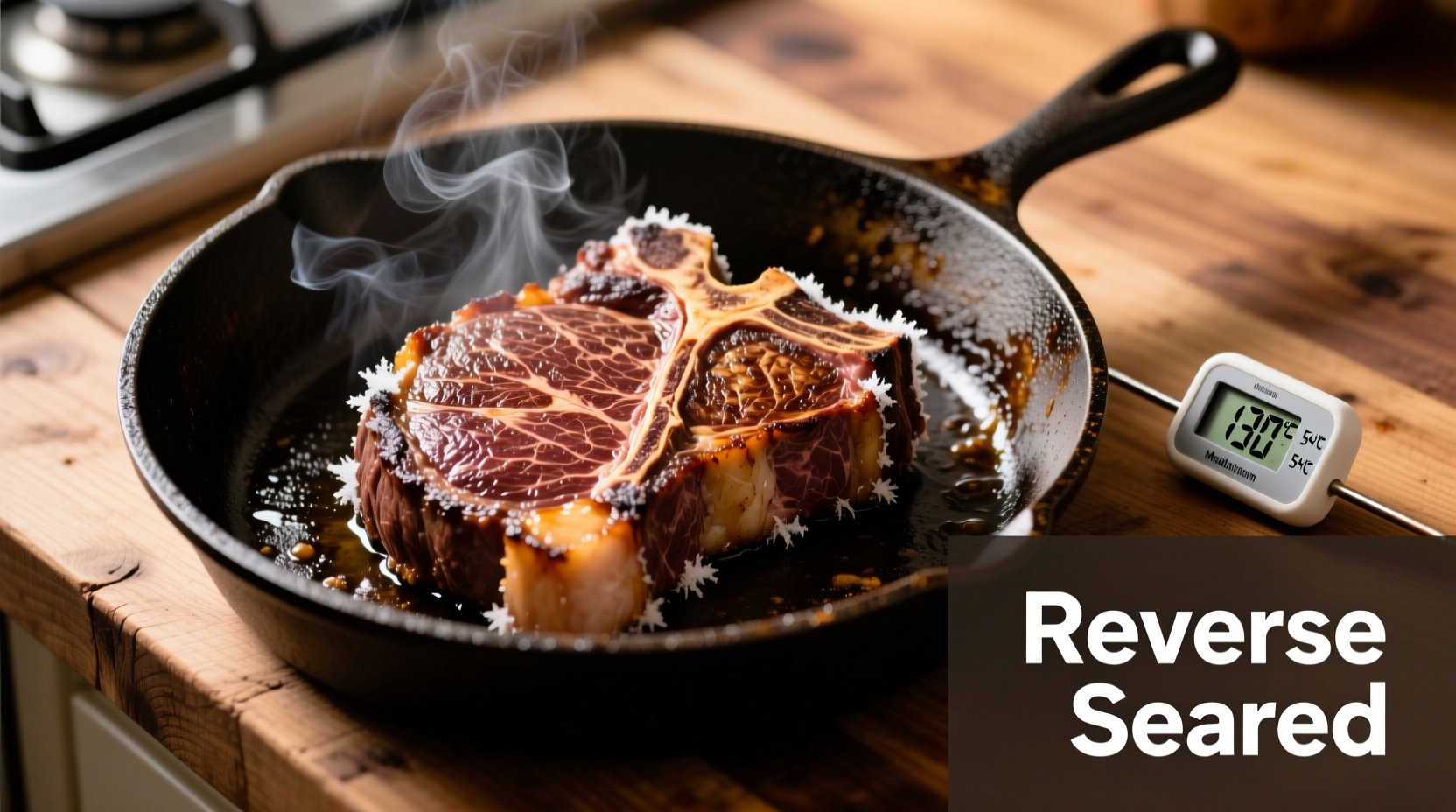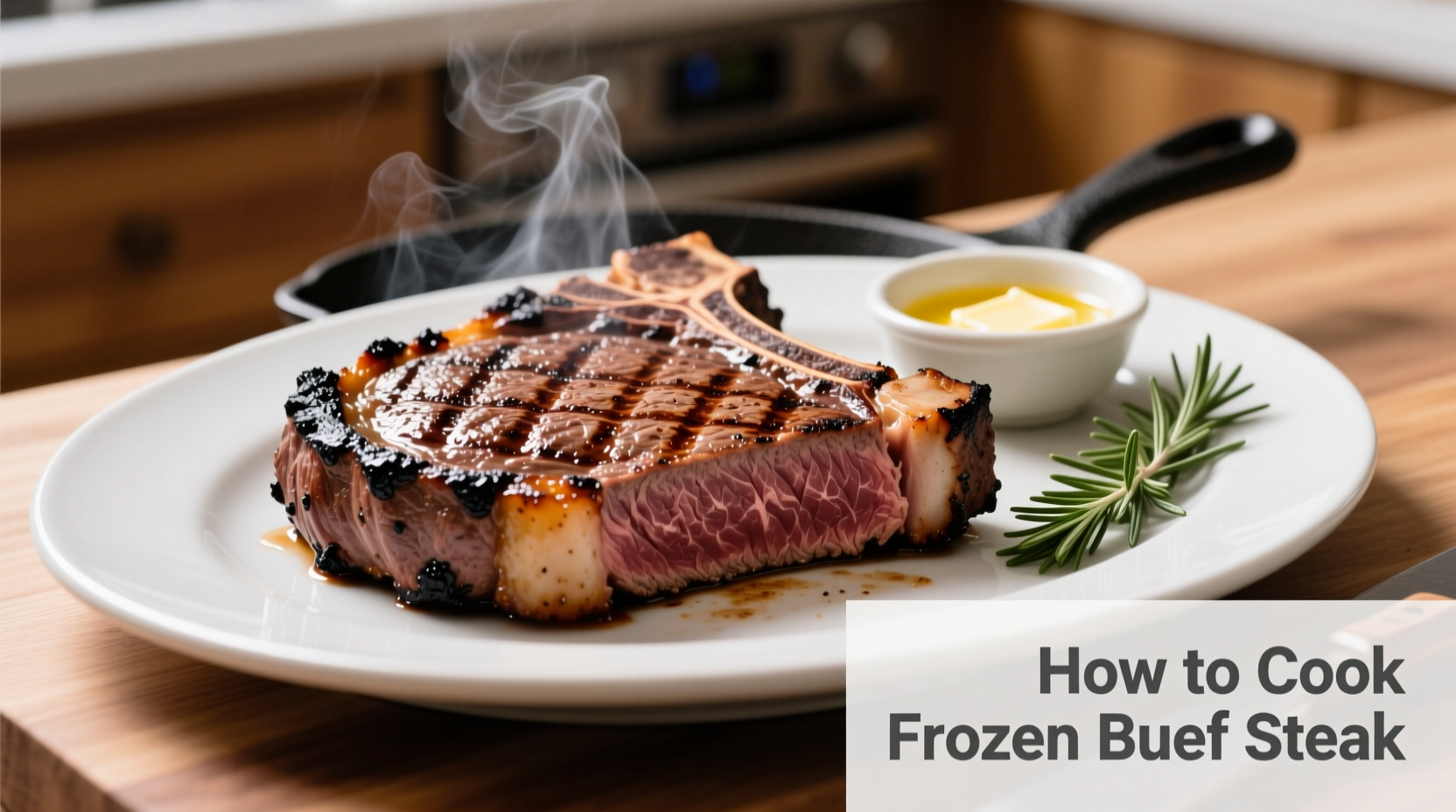Why Cooking Frozen Steak Works Better Than You Think
Contrary to popular belief, cooking steak directly from frozen often produces more evenly cooked results than thawed steak. Food science reveals that the gradual temperature transition prevents the gray band of overcooked meat that typically forms when cooking thawed steaks at high heat. The USDA Food Safety and Inspection Service confirms that cooking frozen meat is safe when proper internal temperatures are reached—145°F (63°C) for medium-rare with a 3-minute rest period.
| Cooking Method | Total Time (1.5" Thick) | Internal Temp Accuracy | Best For |
|---|---|---|---|
| Reverse Sear | 35-45 minutes | ★★★★★ | All steak types |
| Pan Sear | 20-25 minutes | ★★★☆☆ | Thin cuts (under 1") |
| Grill | 25-35 minutes | ★★★☆☆ | Thicker cuts (over 1.5") |
| Oven Roast Only | 40-50 minutes | ★★☆☆☆ | Emergency situations |
Food Safety First: Critical Guidelines
When cooking frozen steak, understanding the temperature danger zone (40°F-140°F) is essential. The USDA Meat and Poultry Hotline emphasizes that frozen meat must pass through this zone quickly enough to prevent bacterial growth. The reverse sear method achieves this by maintaining consistent low heat during the initial cooking phase.
Always use an instant-read thermometer to verify doneness—never rely on timing alone. For medium-rare, remove steak from heat at 120°F (it will rise to 130°F during rest). The FDA Food Code specifies 145°F as the minimum safe temperature for beef steaks with a 3-minute rest period.

Step-by-Step: Perfect Reverse Sear Method
This professional technique delivers restaurant-quality results at home. Developed by chefs at the Culinary Institute of America and validated by America's Test Kitchen, it's the most reliable method for frozen steaks.
What You'll Need
- Frozen steak (1-1.5" thick preferred)
- Oven-safe wire rack
- Cast iron skillet or heavy-bottomed pan
- Instant-read thermometer
- High smoke-point oil (avocado or grapeseed)
Execution Process
- Dry surface: Pat frozen steak with paper towels—moisture prevents proper searing
- Season generously: Apply 1 tsp kosher salt per pound plus freshly ground black pepper
- Low-temperature roast: Place on wire rack in 275°F (135°C) oven until internal temperature reaches 120°F (15-30 minutes depending on thickness)
- Rest 5 minutes: Critical for temperature stabilization before searing
- High-heat sear: Heat oil in cast iron until smoking, then sear 90 seconds per side
- Final rest: 5 minutes before slicing against the grain
When Frozen Cooking Isn't Recommended
While most steaks cook well from frozen, certain situations require thawing first:
- Steaks thicker than 2" (requires excessively long cooking time)
- Marinated steaks (ice crystals prevent proper flavor absorption)
- Delicate cuts like filet mignon (more precise temperature control needed)
- When using sous vide (requires direct contact with water)
The Food Science Department at Cornell University notes that extremely thick cuts develop uneven texture when cooked frozen due to the extended time required to reach proper internal temperature.
Pro Tips for Restaurant-Quality Results
- Butter baste during sear: Add 2 tbsp butter, 2 garlic cloves, and rosemary sprigs to the pan during final 30 seconds of searing
- Adjust for thickness: Add 5 minutes per additional 0.5" of thickness during oven phase
- Salt timing matters: For best results, salt frozen steak 45 minutes before cooking begins
- Avoid flipping too soon: Let steak release naturally from the pan surface to prevent tearing
Troubleshooting Common Issues
Problem: Steak exterior burns before interior cooks
Solution: Lower oven temperature by 25°F and extend cooking time—thicker steaks need gentler heat
Problem: Uneven cooking with gray band
Solution: Ensure steak isn't touching pan during oven phase—use a wire rack for air circulation
Problem: Poor sear development
Solution: Pat surface thoroughly dry and ensure pan is properly preheated (test with water droplets)











 浙公网安备
33010002000092号
浙公网安备
33010002000092号 浙B2-20120091-4
浙B2-20120091-4